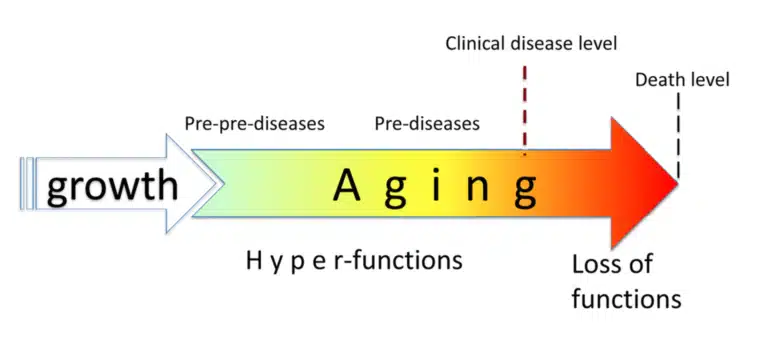Anti-aging treatments at the Linus Pauling Prevention Center


Medically assisted aging inhibition
The Linus Pauling Prevention Center (LPPC) offers a personalized, physician-led approach for those who want to take an active and informed approach to healthy aging. As a physician with expertise in preventive, orthomolecular and epigenetic medicine, I guide patients in slowing biological aging and extending their health span – the years during which one remains vital, functional and independent.
Key elements of our biogerontological approach
In specific cases – in addition to lifestyle and nutritional interventions – off-label pharmacological agents that are investigated in biogerontology as potential geroprotective agents are also considered. These are prescribed only after thorough analysis and with informed consent:
Rapamycin (mTOR inhibitor):
may dampen the activity of aging-promoting signaling pathways. Intermittent (“hit and run treatment”) and low-dose use may optimize the balance between efficacy and safety.
Metformin:
Affects mitochondrial stress, glycemic control and insulin sensitivity. Interesting in metabolic healthy elderly with increased biological age.
Acarbose:
attenuates postprandial glucose spikes and has been linked in animal models to longevity extension by, among other things, a recet of the microbiome
Dasatinib (with quercetin):
A senolytic agent in “hit and run treatment” aimed at eliminating senescent cells, with potential benefits on inflammation, tissue aging and systemic functionality.
These agents are always carefully monitored and never used by default. The decision to use them is based on clinical profile, risk assessment and current biomarkers.
Monitoring via epigenetic DNA diagnostics
To measure the impact of interventions on the biological aging process, I use epigenetic DNA analysis. Through this advanced technology, epigenetic age is determined based on DNA methylation patterns. This can be used to determine if an intervention slows down the biological clock. Among other things, I work with:
Epigenetic clocks (such as Horvath, PhenoAge, GrimAge)
Methylation inflammation indices
Markers of immunosenescence and metabolic dysfunction.
These tests are an important feedback loop within the treatment pathway, and are repeated periodically.
Personalized follow-up
As a physician, I personally follow up with all patients within a medically and ethically based care pathway. This pathway includes:
- Comprehensive intake with clinical and lifestyle analysis
- Blood tests focused on micronutrient, metabolic and inflammatory profiles
- Imaging where relevant (such as calcium score, DEXA, whole-body MRI)
- Initiation and follow-up of targeted (off-label) interventions
- Periodic evaluation of biological aging rate
This approach is consistent with international developments in biogerontology and personalized preventive medicine, with an eye toward evidence-based practice and ethical due diligence.
